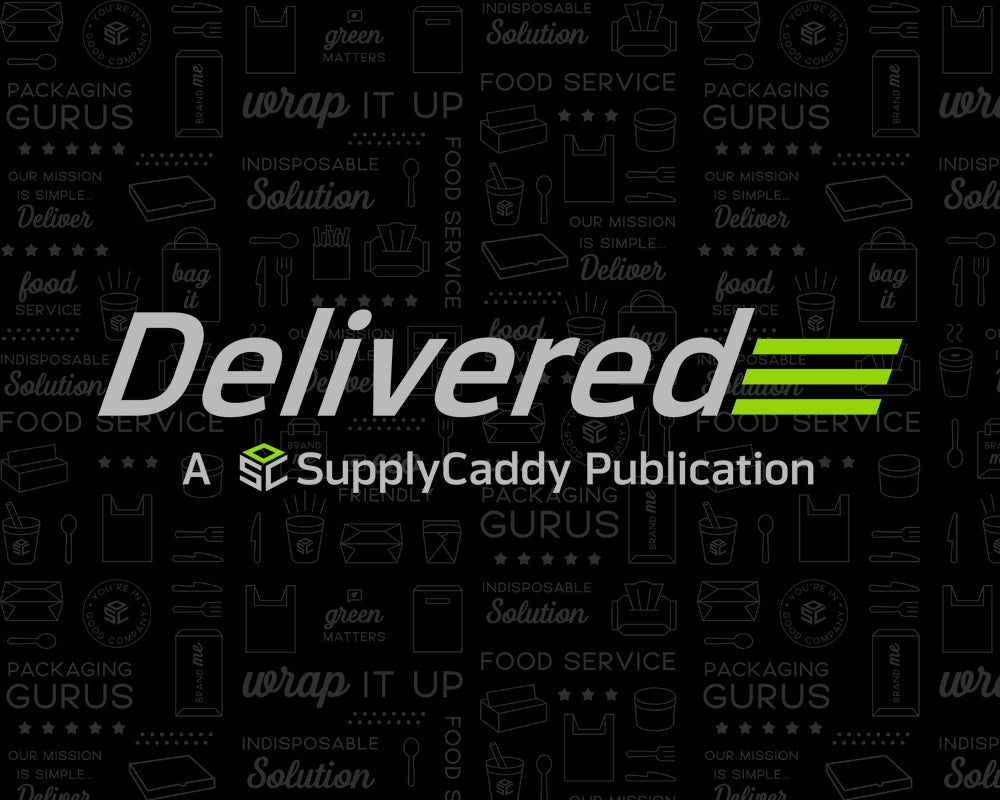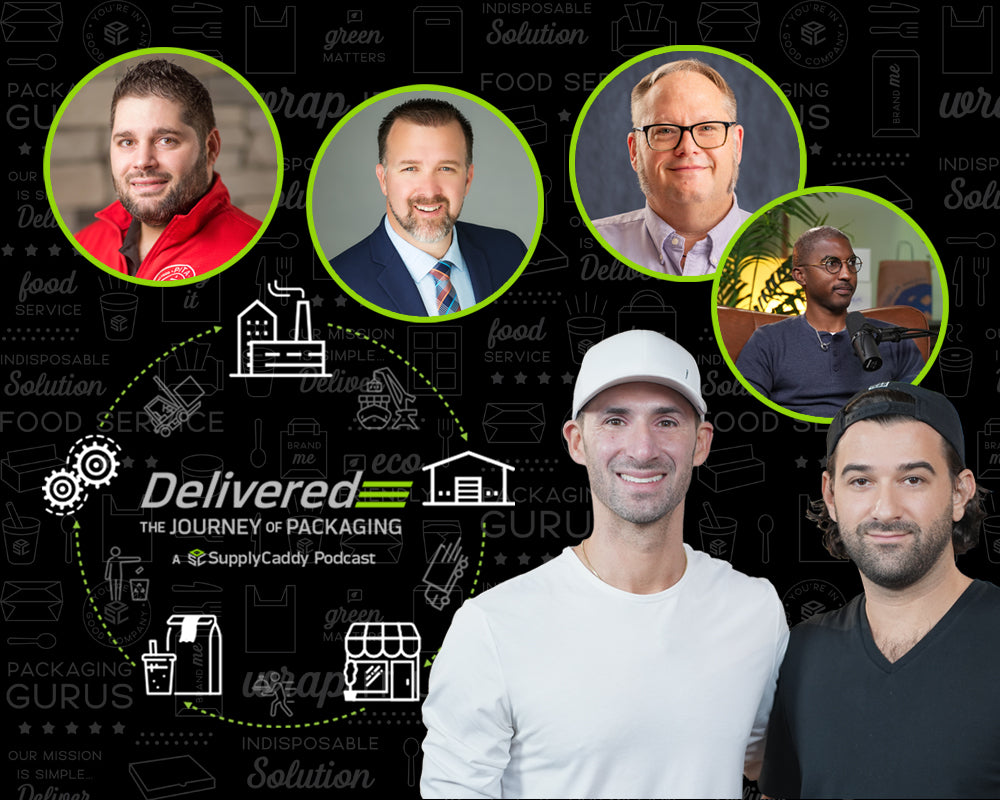As takeout becomes increasingly popular, there is growing pressure to select suitable packaging. The bag you provide your clients is more important than ever, regardless of whether you manage a national food service brand, a neighborhood café, or a quick-service restaurant. It involves more than just moving food from one place to another. Your brand's ideals are reflected in your takeout packaging, which also shapes consumer perception and significantly contributes to the global environmental discourse.
The most significant issue now is whether we should use plastic or paper.
While the debate is not new, it has never been more critical. The decision between paper and plastic takeaway bags is now more than just a financial one; it's a strategic one, as environmental concerns reach an all-time high, regional legislation changes, and consumer preferences shift.
In this blog post, we will explore the pros and cons of paper bags versus plastic takeout bags, and how custom, personalized paper bags can benefit you and your business.
What Are Paper Takeout Bags Made Of?
Paper takeout bags are typically made from kraft paper or recycled paper pulp. Kraft paper is favored because it’s strong, biodegradable, and easy to print on, making it ideal for branding. These bags can be made from virgin paper or post-consumer recycled content, depending on sustainability goals and regional availability.
Some paper bags include a water-resistant or grease-resistant lining, which helps prevent soggy bottoms when handling food. For added strength, many paper bags are designed with twisted or flat handles that are glued or stitched into the structure. Paper bags can be certified by third-party organizations, such as the Forest Stewardship Council (FSC), which verifies that the paper comes from responsibly managed forests. This provides businesses with a traceable, ethical supply chain, offering peace of mind to eco-conscious customers.
What Are Plastic Takeout Bags Made Of?
Plastic takeout bags are typically made from polyethylene, a petroleum-based material. The two most common types are:
HDPE, or high-density polyethylene, is a lightweight, thin, and reasonably priced material. Many convenience stores have these traditional crinkly plastic bags. For their size, plastic bags are remarkably robust and lightweight. But they take hundreds of years to decompose in landfills and are derived from non-renewable fossil fuels. Some more recent plastic bags claim to be compostable or biodegradable, although many of these require specific conditions that aren't present in the majority of municipal waste systems. As a result, more companies and customers are transitioning from plastic to eco-friendly and branded alternatives, such as personalized paper bags.
Paper Bag vs. Plastic Takeout Bags: Pros and Cons You Should Know
-
Environmental Impact of Paper Bags vs. Plastic Bags
Paper bags are a better choice for the environment because they are biodegradable and made from renewable materials, such as trees. They can be recycled, reused, and will naturally break down over time. Unlike plastic, which can stay in the environment for hundreds of years, paper breaks down much faster when composted or disposed of properly.
Making paper bags does use more water and energy, but many paper bag makers are now using cleaner energy and better recycling methods. Some paper bags are even made from recycled paper, which helps reduce waste. While paper does not break down quickly in landfills because of low oxygen, it still does not leave behind harmful microplastics like plastic bags do.
Plastic bags, on the other hand, are less resource-intensive to manufacture but far more harmful once discarded. They can take 500+ years to degrade and are notorious for polluting oceans and wildlife habitats. Recycling rates for plastic bags are extremely low, under 10% in many regions, because they often clog sorting machines and are not accepted in curbside programs. In short, paper bags are the more eco-friendly option, especially when made from recycled materials and disposed of properly.
-
Cost Comparison: Are Paper Bags More Expensive Than Plastic?
Yes, in most cases, paper bags cost more upfront than plastic. The raw materials, production process, and shipping (due to the bulkier and heavier nature of paper bags) all contribute to the increased price. A standard Kraft paper bag might cost three to five times more than a plastic bag of the same size.
However, this doesn’t tell the whole story. Paper bags can double as a branding tool, especially when customized, so businesses often view the added cost as a marketing investment. Consumers tend to view paper bags as premium, which can boost the perceived value of your food and brand. Additionally, if you operate in a region where plastic bags are taxed, fined, or banned altogether, the cost of compliance with plastic use may outweigh the initial savings.
-
Durability and Strength: Which Bag Handles Takeout Better?
Plastic bags are water-resistant, flexible, and less prone to tearing under weight. That’s why they’ve historically been the go-to for heavy or greasy food items. But paper is catching up. Many modern paper food packaging bags are reinforced for strength, feature thicker bases, and come with grease-resistant linings.
For restaurants offering sandwiches, bakery items, or light meals, paper bags are an ideal choice. For heavier orders or large family meals, double-bagging or using specialty heavy-duty paper bags can do the job just as well. If presentation and sustainability matter more to you than maximum tensile strength, custom personalized paper bags are the more intelligent choice.
-
Customer Perception: What Do Consumers Prefer?
Consumers are increasingly environmentally aware. In surveys conducted by McKinsey and other major research groups, a significant percentage of consumers across the US and Europe prefer paper over plastic, even if it costs more. People associate paper bags with higher quality, premium brands, and ethical business practices.
A sleek, well-designed paper bag feels more thoughtful. It sends a message: We care about the planet. We care about our customers. On the other hand, plastic bags, especially those that are fragile and generic, can tarnish your brand image. If you’re aiming to create a memorable takeout experience, paper is the clear winner in customer perception.
-
Regulations and Bans: What Businesses Need to Know
Many U.S. states, including California, New York, and Oregon, have banned or heavily restricted the use of single-use plastic bags. Canada has also enacted federal bans. The EU is moving in the same direction. In these areas, handing out a plastic bag can cost you more than just money; it could lead to fines, bad press, or worse.
Paper bags, meanwhile, are generally allowed under these bans, especially when made from recycled content. That’s why more and more restaurants are proactively switching to paper, avoiding future compliance headaches. If your business operates in multiple locations or ships nationwide, it’s critical to have a packaging strategy that meets current and upcoming regulations. Paper bags offer peace of mind.
Upgrade Your Takeout Packaging with SupplyCaddy’s Custom Personalized Paper Bags
At SupplyCaddy, we specialize in helping food service businesses like yours make smarter, more sustainable packaging choices. We don’t manufacture plastic bags, and that’s by design. Instead, we focus on delivering high-quality, custom, and personalized paper bags that are durable, beautifully branded, and eco-conscious.
Whether you’re running a national restaurant chain or a regional food service concept, we’ve got you covered. Our paper food packaging bags are designed to reflect your brand identity and withstand the rigors of real-world use. From bold logos to subtle finishes, we’ll help you create a look that stands out and stays memorable.
With manufacturing across North America, South America, and Europe, you benefit from localized supply, faster delivery, and consistent quality, regardless of your customers' locations. We’re more than just a supplier. We’re your packaging partner. Reach out to us today at hello@supplycaddy.com.


